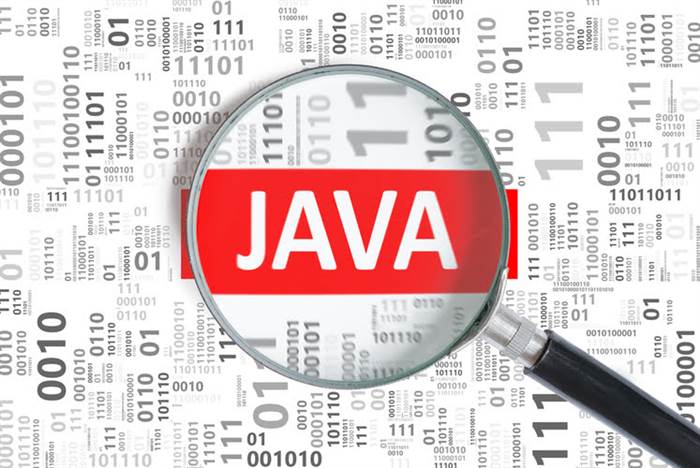Developer portals help teams curate, manage, and replicate these environments. Virtualization was introduced as a solution, giving rise to the virtualized deployment era. Multiple virtual machines running on the central processing unit of a single physical server allow siloed applications. In addition, this system provides a higher level of security, as the information of an application cannot be accessed by another application. Similarly, you can configure budget thresholds to provide early warnings when costs exceed certain limits. These thresholds can act as guardrails to provide the necessary financial discipline to the Kubernetes infrastructure teams.
This article outlines some best practices to help you avoid common disruption problems. Managing large, distributed systems can be complicated, especially when something goes wrong. Kubernetes health checks are an easy way to make sure app instances are working.
Saying Goodbye to Ingress: Embracing the Future of Kubernetes Traffic Management with Gateway API…
Preventing containers from running with privileged flag – this type of container will have most of the capabilities available to the underlying host. This flag also overwrites any rules you set using CAP DROP or CAP ADD. A well-conceived CI/CD pipeline can bake automation into many phases of your development and deployment processes. Automation is a critical characteristic of container orchestration; it should be a critical characteristic of virtually all aspects of building an application to be run in containers on Kubernetes. Join us if you’re a developer, software engineer, web designer, front-end designer, UX designer, computer scientist, architect, tester, product manager, project manager or team lead.

They also won’t have to implement role-based access control to secure your separate environments or instrument monitoring and logging for your cluster. Kubernetes infrastructure brings unique challenges to cost management. Most of these challenges are related to the complexity of Kubernetes and kubernetes development its usage. For example, containerized applications deployed in Kubernetes use various resources such as pods, deployments, ingress, persistent volumes, and namespaces. Calculating the cost for applications involves looking at the usage metrics of all of these resources at a granular level.
Red Hat joins the Backstage.io community
The operator is especially useful when you have a stateful application that you need to perform some type of occasional admin task, like taking and restoring backups of that application’s state. In this scenario, you’d have to create a custom controller and custom resource to perform this task because Kubernetes does not know how to perform this task out-of-the-box. This configuration will make sure that when a new pod is created, it will not use a default service account within the same namespace. This is a good example of how building a containerized application might require a shift in traditional practices for some development teams. ” says Miles Ward, CTO atSADA. Ward points tomicroservicesand the12-factor methodologyas chief examples of modern application development. We asked Osnat and other cloud-native experts to share their top tips for developing apps specifically to be run in containers using Kubernetes.

Using the maximum number of nodes, you can then choose instance sizes and counts, taking into consideration the IP subnet space made available to the cluster. But by starting with these tips, you’ll be well on the way toward advancing your complex application development projects using Kubernetes. From selecting right-sized instances to monitoring Kubernetes resource usage and costs at a granular level, following the best practices outlined in this article will help you ensure that costs stay under control.
Kubernetes Best Practices for Building Efficient Clusters
You can authorize the use of policies for a Pod in Kubernetes Role-Based Access Control by binding the Pod’s serviceAccount to a role that has access to use the policies. Create one cluster admin project per cluster to reduce the risk of project-level configurations adversely affecting many clusters, and to help provide separation for quota and billing. Cluster admin projects are separate from tenant projects, which individual tenants use to manage, for example, their Google Cloud resources. You can control access to Google Cloud resources through IAM policies.

Cost optimization framework Get best practices to optimize workload costs. Cloud Data Loss Prevention Sensitive data inspection, classification, and redaction platform. Kubernetes Engine Monitoring GKE app development and troubleshooting. Network Intelligence Center Network monitoring, verification, and optimization platform. VMware Engine Migrate and run your VMware workloads natively on Google Cloud.
Deploy Your Pods as Part of a Deployment, DaemonSet, ReplicaSet, or StatefulSet Across Nodes.
Building new applications specifically for containers and Kubernetes might be the best starting point for teams just beginning their container work. Engineers write documentation in Markdown files that live together with their code, giving teams access to system architecture and application documentation when and where they need it. IT organizations https://www.globalcloudteam.com/ are the unsung heroes in the background, keeping developer workflows rolling smoothly with the right tools, validated environments, and on-demand services. Red Hat Developer Hub helps developers focus on crafting beautiful code, not the plumbing underneath it. Surge upgrades reduce the overall cluster upgrade time and impact on applications.

But if you’re building an application from scratch – as Osnat advises teams do when they are getting started with containers and orchestration – give strong consideration to the microservices approach. The size of nodes determines the maximum amount of memory you can allocate to pods. Because of this, we recommend using nodes with less than 2GB of allocatable memory only for development purposes and not production. For production clusters, we recommend sizing nodes large enough (2.5 GB or more) to absorb the workload of a down node. Kubernetes clusters require a balance of resources in both pods and nodes to maintain high availability and scalability.
Audit policy logs regularly
Using the Cluster Autoscaler makes sense for highly variable workloads, for example, when the number of Pods may multiply in a short time, and then go back to the previous value. In such scenarios, the Cluster Autoscaler allows you to meet the demand spikes without wasting resources by overprovisioning worker nodes. Another important security measure is to restrict SSH access to your Kubernetes nodes. You typically wouldn’t have port 22 open on any node but may need it to debug issues at some point. Configure your nodes via your cloud provider to block access to port 22 except via your organization’s VPN or a bastion host. You’ll be able to quickly get SSH access but outside attackers won’t.
- However, if you have control over the application, you could output the right format, to begin with.
- Please note, there are cost implicationswith running regional clusters.
- ” says Miles Ward, CTO atSADA. Ward points tomicroservicesand the12-factor methodologyas chief examples of modern application development.
- In production I bake the app code into the image for obvious reasons.
- Using RBAC in your K8s cluster is essential to properly secure your system.
- Cost transparency helps create financial discipline and accountability among stakeholder teams, and provides them with both the insights and the motivation to find additional ways to reduce costs.
The “shift left” movement is the idea of empowering developers to fully own every aspect of the software they develop. This is a great goal fully in line with DevOps philosophy, but it also puts a lot of additional burden on developers. Each of the tools has its own strengths and weaknesses, but for the most part, they all work in a similar fashion. As you can imagine, the above requirements significantly complicate the development process. Use a log aggregation tool such as EFK stack , DataDog, Sumo Logic, Sysdig, GCP Stackdriver, Azure Monitor, AWS CloudWatch. A daemon on each node can collect the logs from the container runtime .
Cluster configuration
Get practicing and you’re on your way to becoming a stateful Kubernetes pro. PersistentVolumes – a construct that allows you to define a persistent storage unit and mount it to pods within Kubernetes clusters. Service routing – consider manageability of service routing as your application grows. Use ConfigMaps – all scripts and custom configuration should be placed in a ConfigMap, to ensure all application configuration is handled declaratively.



Hinterlasse einen Kommentar